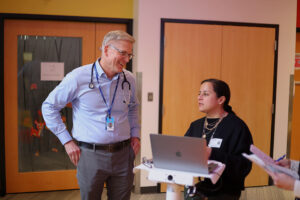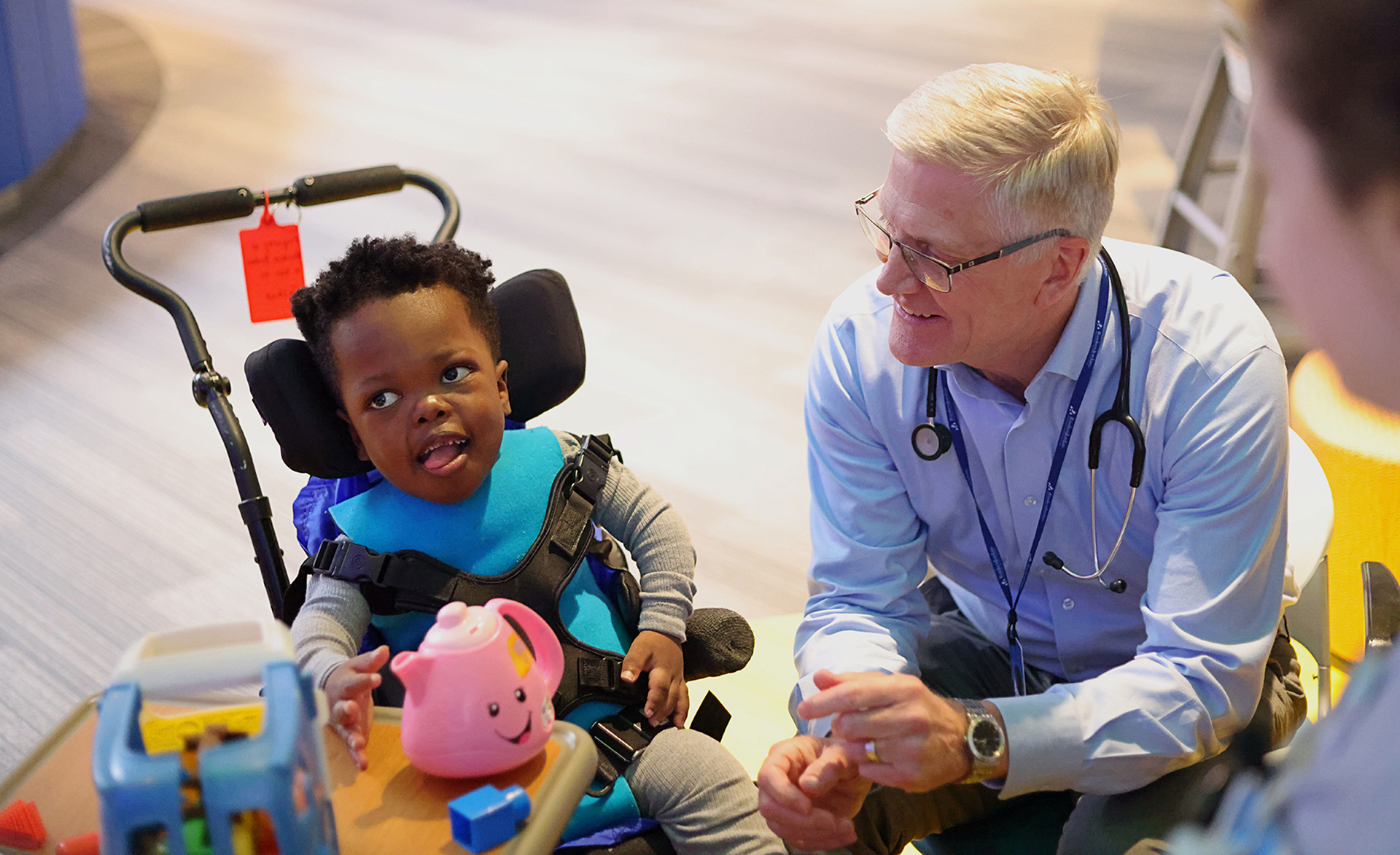In 2021, we launched a time-motion study to track the whereabouts and activities of our patients, an important first step in reversing the trend that a long hospital stay can put a child more at risk for developmental delay.
It was the first study of its kind and our initial results were published in the peer-reviewed Child: Care, Health & Development. (Read more about the research in this blog post.)
While having a published paper is an important step in our mission to encourage more research around children with complex medical conditions, the study and our findings have impacted our hospital in even more ways than we anticipated.
1. It’s validated our approach and the power of play.
At Ranken Jordan, we follow our unique care model, Care Beyond the Bedside, which is focused on play as healing and encouraging our patients to spend time outside of their hospital bed.
I’ve worked at Ranken Jordan for more than 20 years and worked with more than 2,000 patients and their families.
From my experience, the power of play is real. I’ve seen so many kids thrive and hit milestones faster than expected because they had time to play.
But seeing the actual data has given me and my staff a sense of validation that our approach works. It’s energized us to give children with complex medical conditions the chance to live their best lives.
2. It’s helped us decide where to spend our time and resources.
 I am lucky to work with some incredibly innovative and creative people who are always pitching ideas for new full-time positions or programs for our kids.
I am lucky to work with some incredibly innovative and creative people who are always pitching ideas for new full-time positions or programs for our kids.
While we would love to make all of these ideas happen, like any organization, we are limited to what we can do.
The research has helped us focus and has therefore solidified some of these ideas, such as our new Patient Play Associate (PPA) position.
Our team had the idea a while ago that we pay employees to play with kids, especially at less busy periods. Our research suggests kids need more face to face interaction and more variety of play activities, so the research was the final piece of evidence we needed to launch the new role.
We now have 18 PPAs on staff and we’re already seeing positive results in our patients.
3. It’s shaping the future of our hospital.
In addition to initiatives we’ve already put into action, we plan to remodel our building to allow our kids even more space to play.
This spring, we will start remodeling our South Gym to make a more permanent space for OZ, short for Optimization Zone, which is our innovative in-hospital, structured group-developmental program for medically complex children 5 years old and younger, similar to a preschool.
We are also planning to remodel our West Unit, home to our youngest patients, where we will create contained spaces, similar to big playpens, to allow for more supervised and safe playtime.
4. It’s encouraged us to stay focused on research and measurement moving forward.
Our next phase of research is to finalize how we measure the impact of the changes we’re making, and if we’re seeing a developmental benefit from programs like OZ.
We will also be launching another time motion study once the renovations are done and we are working with development associates to help us determine how best to measure progress.
Stay tuned!
How you can help
Many of the changes we are making have been funded by the generosity of our supporters. If you’d like to support what we’re doing at Ranken Jordan, I encourage you to donate.
We are extremely proud of what we’ve accomplished so far but we are even more excited about what we have planned for the months and years to come.
E-Newsletter Coming Soon!
Sign up today to subscribe and receive our upcoming e-newsletter.






